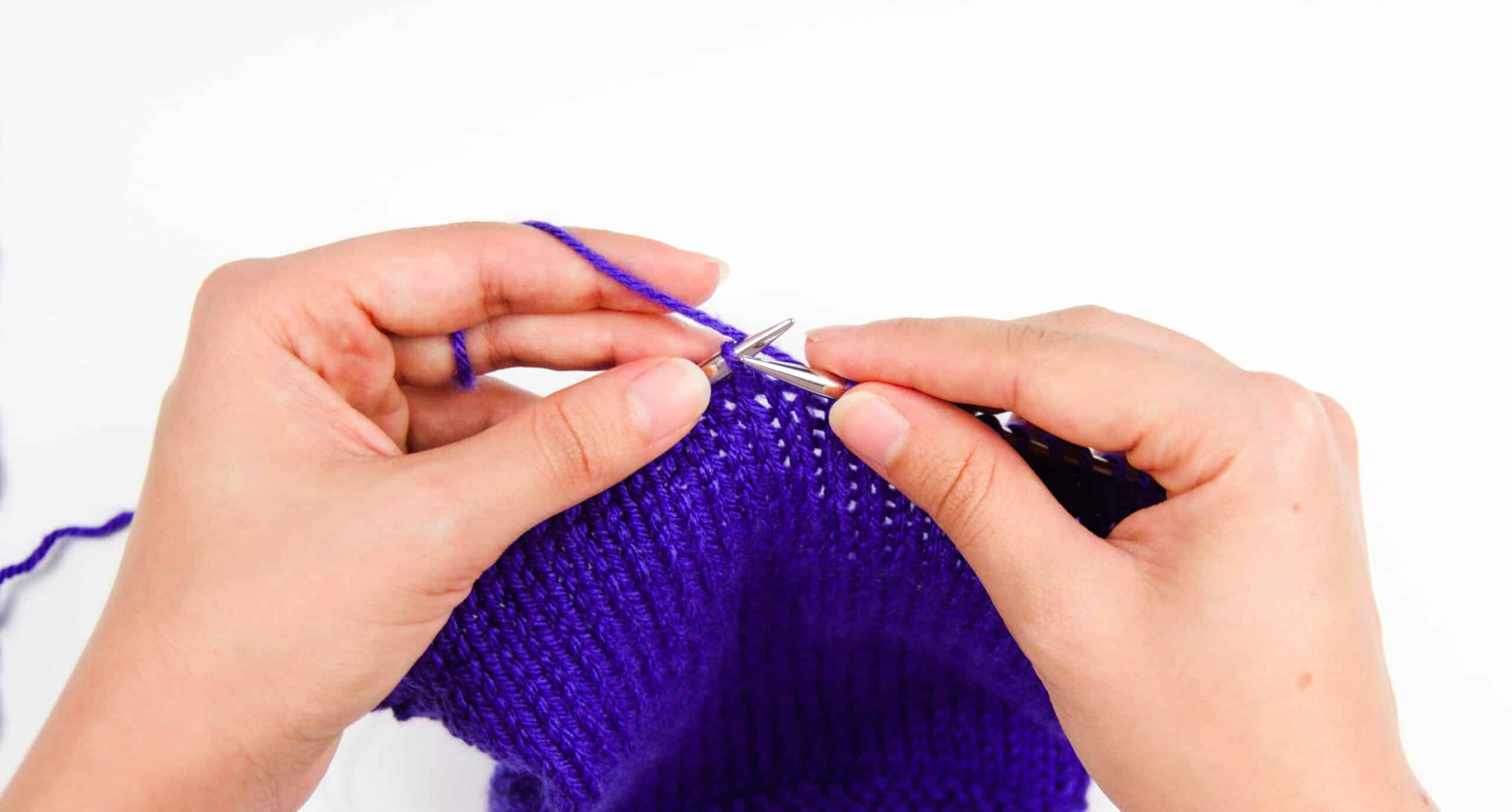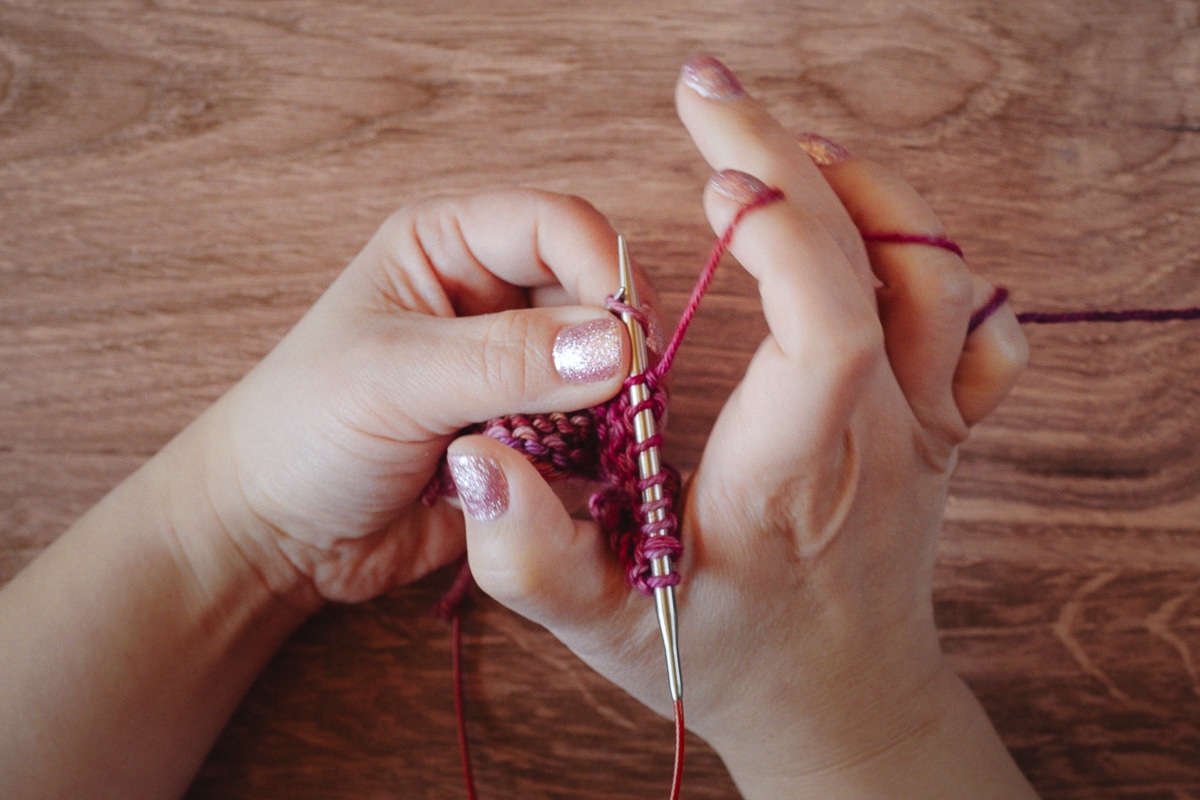Knitting is a relaxing and rewarding hobby, but if you find yourself knitting at a snail’s pace or experiencing sore hands, you’re not alone. The good news? A few simple adjustments can help you knit faster while keeping your hands comfortable. Whether you’re aiming to finish projects more efficiently or just want a smoother experience, this guide will help you boost your speed and reduce hand fatigue.
Improve Your Knitting Technique
Try Continental Knitting
If you currently use the English (throwing) method, consider switching to Continental knitting. In this style, you hold the yarn in your left hand and “pick” it with the right needle, which reduces hand movement and speeds up the process. Many knitters find that once they get the hang of it, Continental knitting is noticeably faster.
Use the Flicking Method (English Style Alternative)
If you prefer to keep knitting English style, try the flicking method instead of fully “throwing” the yarn. Instead of letting go of the right needle to wrap the yarn, use small flicks of your index finger to move the yarn over the needle. This minimises unnecessary movement and speeds things up. If you’re looking for creative gift sets for every knitter, click on the link.
Master Efficient Stitching
- Keep stitches close to the needle tips so you don’t have to move your hands as much.
- Avoid lifting your hands too far away from your work—small movements save time.
- Try using circular needles, even for flat knitting, to reduce strain on your wrists.
Maintain Proper Yarn Tension
Inconsistent tension can slow you down, especially if you’re constantly adjusting your yarn. The way you hold your yarn affects how smoothly it feeds through your fingers.
Tension Tips:
- Wrap the yarn around your fingers in a way that allows smooth movement without slipping too much.
- Experiment with different holds (around your pinky, under or over certain fingers) to find the most natural grip.
- Keep your tension relaxed but controlled—gripping too tightly slows you down and tires your hands.
Choose the Right Needles and Yarn

Use Slick Needles for Faster Knitting
- Metal needles (such as stainless steel) allow yarn to slide more easily, making stitches quicker to form.
- Wood or bamboo needles have more grip, which is great for beginners but can slow down knitting.
Match Yarn to Your Needle Type
Some yarns, especially sticky or fuzzy fibres like mohair, can slow you down. If you’re aiming for speed, opt for smooth yarns like superwash wool or cotton blends.
Reduce Hand Fatigue with Better Posture and Breaks
Check Your Posture
- Sit comfortably with your shoulders relaxed and your back supported.
- Keep your wrists neutral instead of bent to avoid strain.
Take Breaks and Stretch Your Hands
Even the fastest knitters take breaks! Every 30–45 minutes, take a moment to:
- Shake out your hands.
- Stretch your fingers, wrists, and shoulders.
- Roll your neck and shoulders to prevent stiffness.
Practice for Speed Without Sacrificing Accuracy
Speed comes with practice, but accuracy matters too. Here’s how to build speed without making mistakes:
- Use simple patterns to focus on efficiency before attempting complex stitches.
- Set a rhythm—knitting to a steady pace helps keep stitches even.
- Try timed practice sessions—knit for 10 minutes and count your rows, then try to improve over time.
Elements That Help You Choose a Knitting Pattern
Are you finding it hard to select a knitting pattern? With so much choice, it can leave you feeling overwhelmed. You want to make sure that you’re enjoying this project and creating something that you’re proud of.
Well, there are some elements you should consider in order to find the perfect knitting pattern. Let’s take a look at what they are.
Your Experience
How long have you been knitting for? This is something that you must consider when you’re choosing a pattern. Of course, you’re going to choose one that corresponds with your experience and knowledge. For example, if you’re just getting started, you’re going to select a beginner pattern. If you’ve enjoyed this activity for years and made many items, you might prefer an expert-level pattern. While it’s always nice to have a challenge, choosing one that’s too advanced for you can lead to frustration and giving up on the project.
The Cost
Of course, you might be on a budget when it comes to knitting. It can be costly to gather all of the materials you need, and then you’ve got to factor in the pattern. Indeed, they are going to be available at different costs, and this is something that you can use to help you make a decision.
The Item
Don’t forget to consider what you’re going to be knitting. Most people want to use the item they create, which means that you should examine what you’re going to bring to life. Indeed, some patterns can be fun. But, if you’re not going to wear the jumper or use the blanket at the end, what’s the point?
Conclusion
Knitting faster while avoiding hand fatigue is all about efficiency, comfort, and consistency. By improving your technique, using the right tools, maintaining good posture, and taking regular breaks, you’ll be able to knit more smoothly and comfortably. With time and practice, you’ll naturally find your rhythm and boost your speed without stress!

